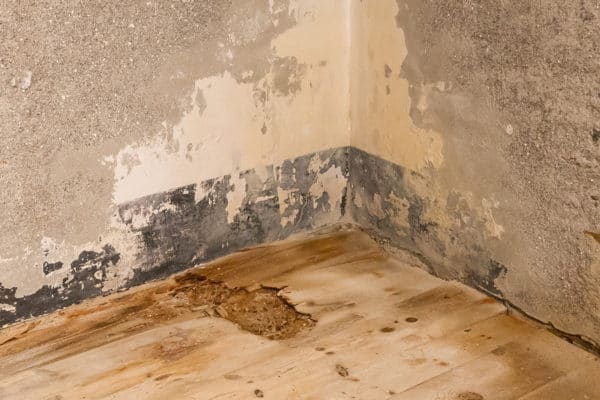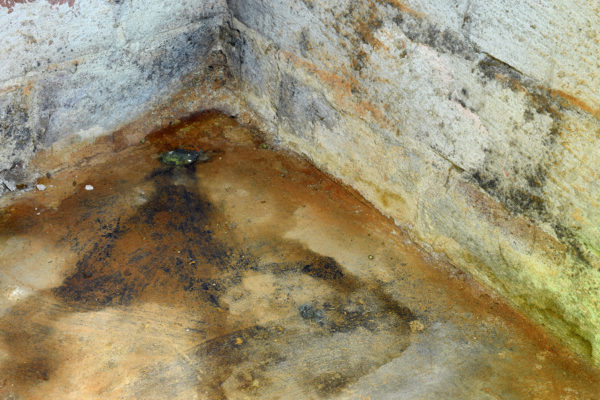READY TO GET STARTED?
REQUEST A FREE ESTIMATE
Fill out the form below or call (888) 466-7849 for a free, no-obligation estimate.

It’s October! Time for all things pumpkin, fall decorations, and staying in to enjoy your home. A potential drawback: the South, unfortunately, does not have instant cooler weather. With temperatures teetering between 85 and 90 degrees, your home might be battling moisture issues and pest invasions in your crawlspace throughout the month. Let’s look at what problems could arise and how investing in crawlspace solutions could help!
Excessive moisture and warm weather work together to create the perfect environment for pests. In addition, your home’s crawlspace is the ideal entry point for pests to enter and invade your home. (Think termites, cockroaches, ants, earwigs, and millipedes)
Along with pests, the high humidity also contributes to conditions suitable for mold growth and wood rot. This can cause severe health issues for members of your home that suffer from asthma and allergies.
Investing in the sealing of your home’s crawlspace won’t just help with cutting down on moisture issues; it can also improve the air quality of your home for you and your family. Acting as a natural pest control barrier, you can get back to enjoying those fall nights indoors and not worrying about what could be taking over your crawlspace.
Interested in crawlspace solutions for your home? Call your local crawlspace care provider to schedule an inspection for your home.

If you’re like most of us you don’t spend too much time inspecting your crawlspace. But did you know that moisture that makes its way into your crawlspace can cause significant problems not only for your home but for your health, as well? Dampness in your crawlspace is a common problem in homes without a proper moisture barrier system. Without a proper barrier, your crawlspace carries humid air that condenses and settles on the pipes, walls, and even the subflooring. This moisture provides the ideal environment for mold, mildew, and pests. A moisture barrier prevents this moisture from evaporating and seeping into the air beneath your home. Moisture barriers are composed of either foil or plastic material that helps prevent moisture from penetrating your crawlspace air.
So why should you have a moisture barrier installed in your crawlspace? Check out these 7 benefits of moisture barrier installation.
The moisture that gets into your crawlspace affects the temperature in your home. It can make your home too hot, too cold, too stuffy, or too dry depending on the weather, the season, and other factors. The moisture either absorbs the warmth from your house or keeps it from escaping. In turn, this causes your HVAC unit or furnace to run too long trying to maintain a steady temperature indoors. Installing a moisture barrier seals those spaces and keeps the moisture out of your crawlspace, helping to regulate the temperature inside.
As we mentioned above, the moisture in your crawlspace can affect the temperature inside your home. As your HVAC unit or furnace runs longer to help maintain the temperature inside, it uses more electricity which, in turn, increases your electricity bill. This also puts additional strain on the HVAC unit, causing them to wear out faster and need costly repairs and/or replacement. A moisture barrier acts as a sealant, controlling the moisture levels and easing the strain of your HVAC system, making your home more energy efficient and saving you money on your energy bills.
High moisture levels in your crawlspace provide the ideal environment for mold and mildew growth. Mold and mildew in your air system can be detrimental to your and your family’s health. Mold can also cause significant damage to your home. Installing a moisture barrier greatly reduces these moisture levels, preventing mold and mildew from forming. Mold and mildew are often the cause of foul odors in your home, as well. A moisture barrier can also help eliminate these stale, musty odors from your house.
Your crawlspace is home to a number of pipes that supply both water and power to your home. When moisture infiltrates your crawlspace, it can cause rotting inside and around these pipes, leading them to burst or break. Moisture barrier installation helps keep your pipes dryer, which increases their lifespan and decreases costly repairs.
As we mentioned above, many of the pipes in your crawlspace house electricity that runs to your home. Moisture and electricity don’t mix! Moisture in and around these pipes can lead to electrical shorts, rusted wires, and even fire. Installing a moisture barrier eliminates the moisture that can infiltrate these pipes, keeping your home safer from electrical hazards.
The foundation of your home is vital to its structure and soundness. Moisture in your crawlspace can lead to wood rot, especially on joists and beams. Rotting wood can lead to significant structural damage to your home which can, in turn, stick you with a huge repair bill. Moisture barrier installation reduces the amount of moisture in your crawlspace which helps prevent wood rot, protecting the structural integrity of your home.
Your unsealed crawlspace is an open invitation to pests and wildlife in search of shelter, food, and water. Once inside, these pests can cause significant damage to your home and your health. Rodents and other wildlife can chew through wood and electrical wires. Roaches and other insects can use the crawlspace to gain access to your home, posing potential health risks to you and your family. Installing a moisture barrier completely closes off your crawlspace, eliminating this entry point for pests into your home.

Fall is the perfect time of year to prepare your home for winter. While prepping your yard and storing away your summer things are usually at the top of the list, don’t forget to protect your home from pests this winter also! Fall is prime time for pests to make their way into your house in search of food, shelter, and warmth over the cold winter months.
Rodents will make their way indoors in search of a warm place to shelter for winter. Flies will often be found on the south and west facing walls of your home in search heat. Many stinging insects like yellow jackets, bees, and wasps will become more hostile in the fall as their food supply dwindles. Cockroaches are attracted by the moisture found in and under your home. Other pests like ants, stinkbugs, ladybugs, and box elders will come inside looking for a place to overwinter.
Now that you know what kinds of pests to expect this fall, what can you do to protect your home from these often unseen invaders? Check out these 6 tips to prevent pests this fall.